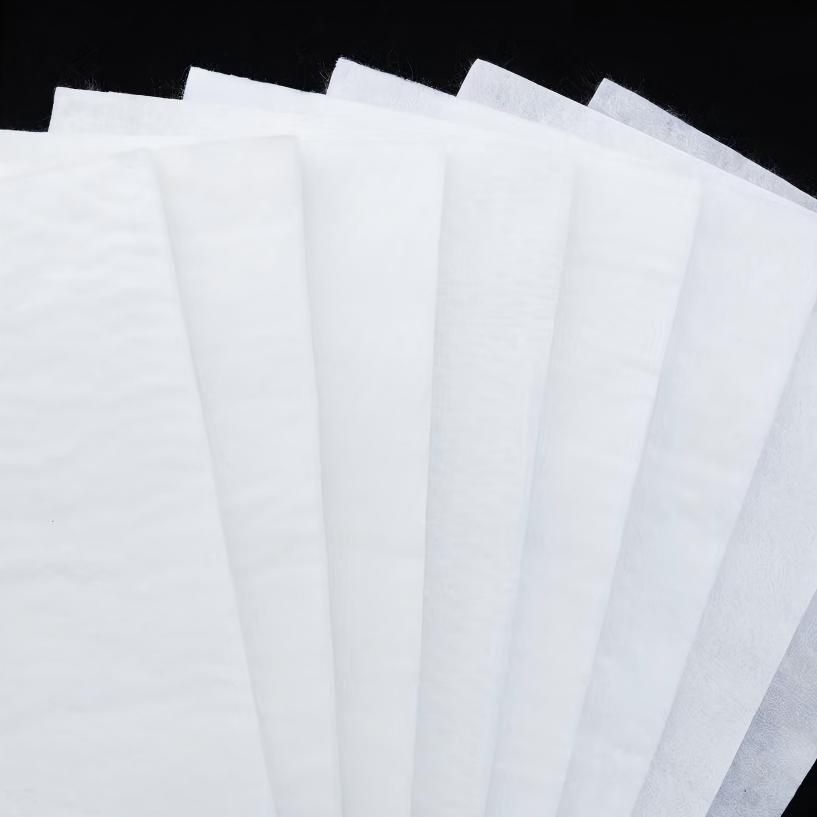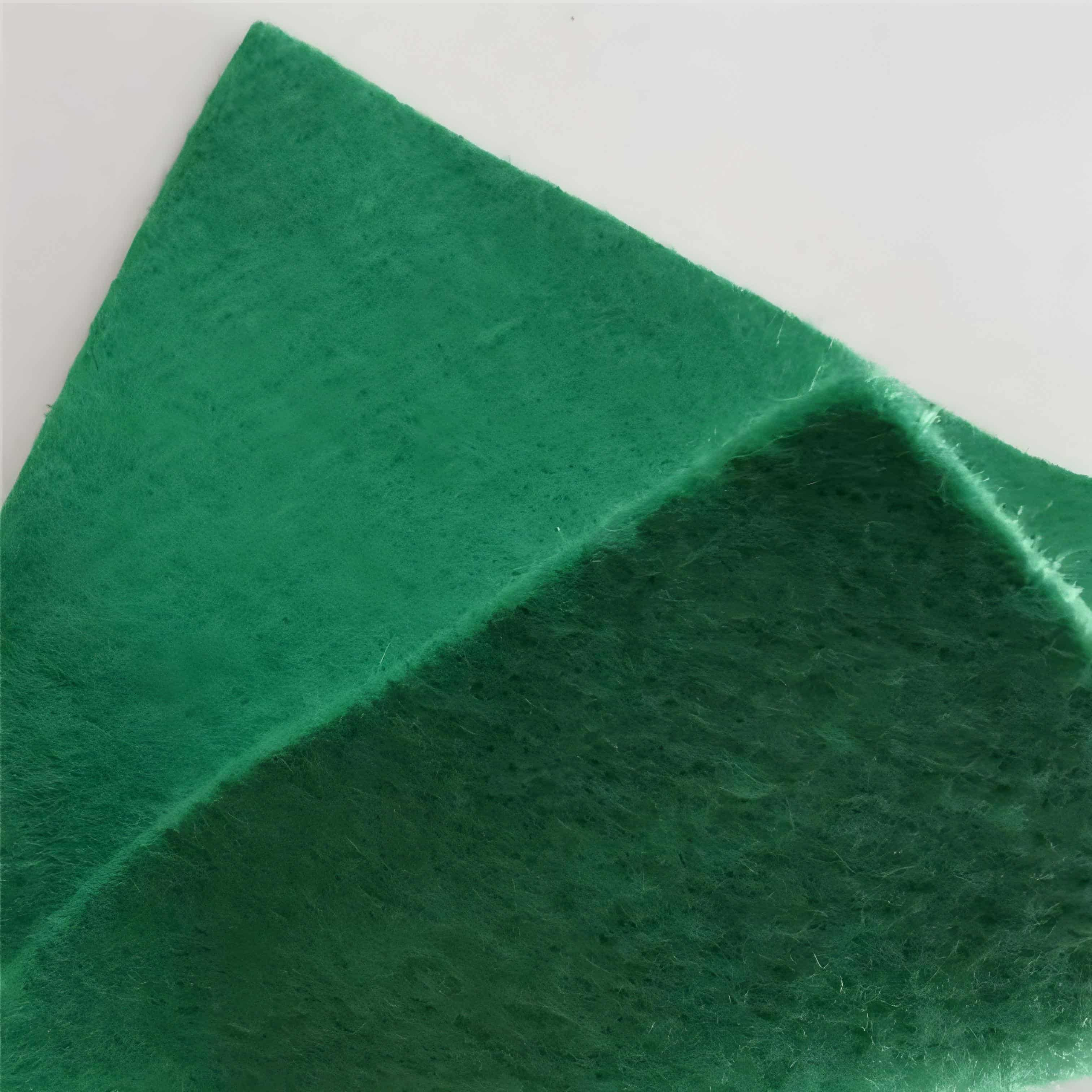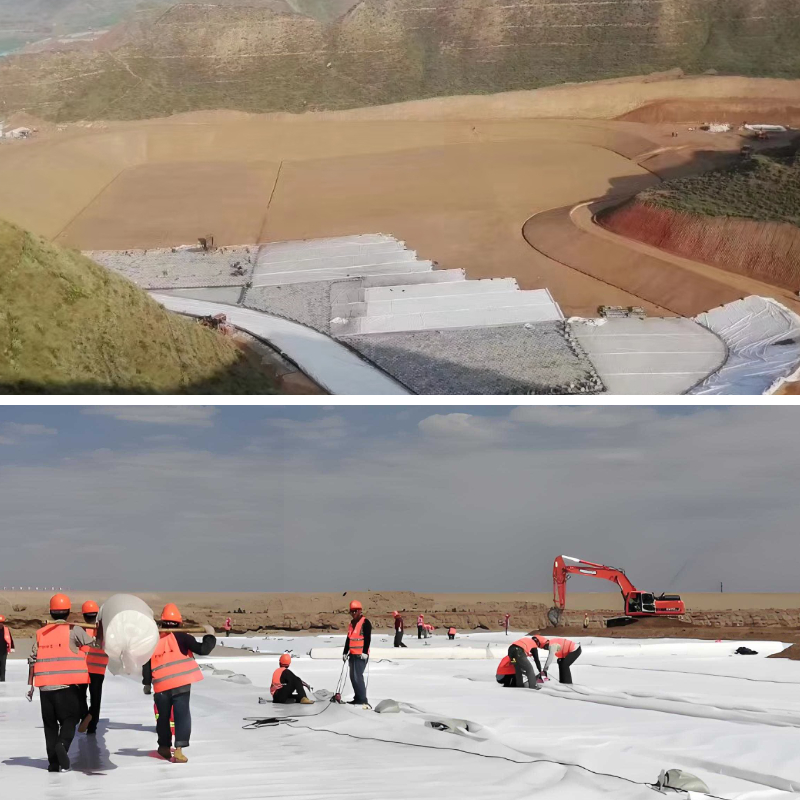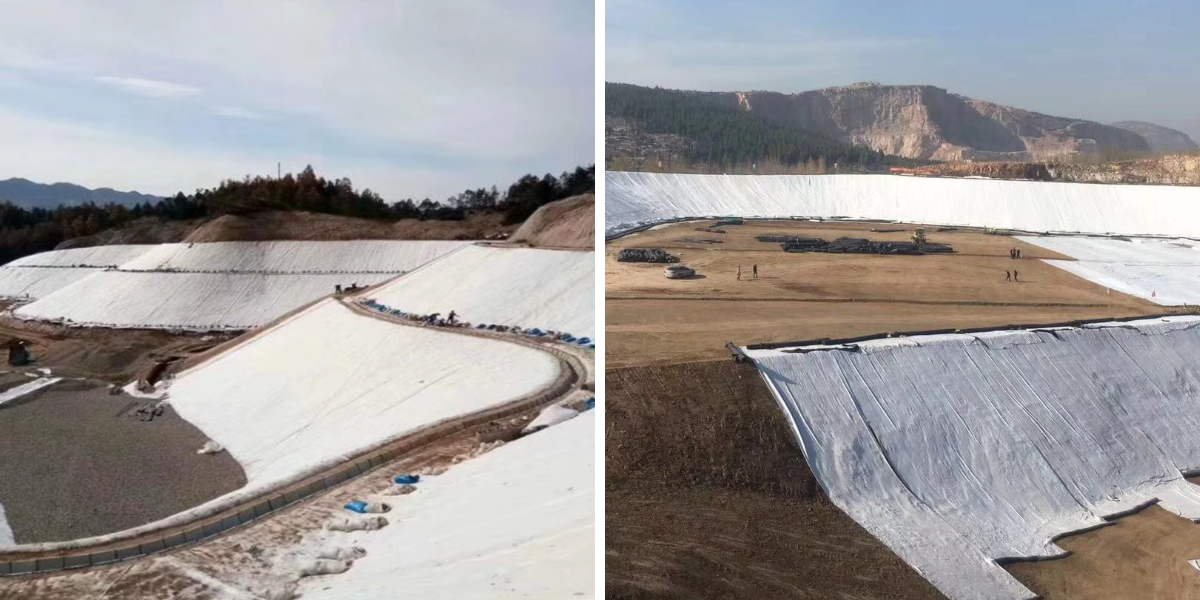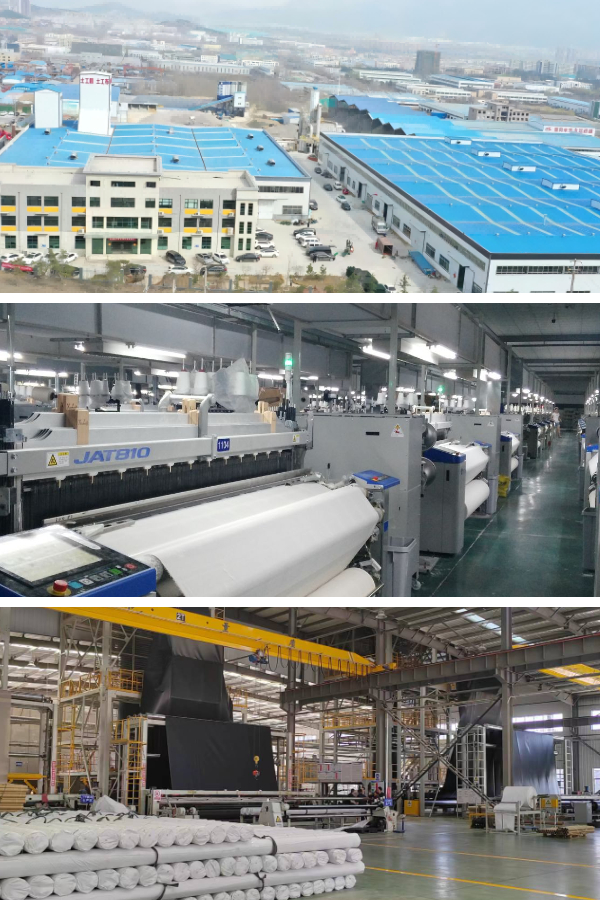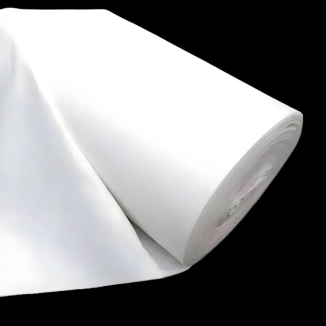Geotextile for Riprap
1. High strength and durability: High tensile, tear resistance, and burst strength, corrosion resistance, microbial resistance, acid and alkali resistance, and can maintain performance in harsh civil engineering environments for a long time.
2. Good permeability: It has good vertical or horizontal drainage capacity, can timely discharge excess water in the soil, effectively reduce pore water pressure, and enhance foundation stability.
3. Isolation function: It can effectively prevent soil and materials of different properties from mixing with each other, maintain the integrity and function of each layer of materials, and reduce uneven settlement.
4. Reinforcement and strengthening: Through its high tensile strength, it disperses load stress, limits lateral displacement of soil, and thus improves the bearing capacity and stability of soil, similar to adding steel bars to concrete.
Product Introduction:
Geotextile for Riprap is a synthetic fiber textile or non-woven fabric specifically used in civil engineering. It is mainly made of high molecular weight polymers such as polypropylene (PP), polyester (PET), polyethylene (PE), and polyamide (PA) through processes such as spunbond, needle punching, weaving, or braiding.
Simply put, geotextile is a type of "degradable steel reinforcement", but it does not degrade itself. Instead, it enhances, protects, drains, or isolates soil and materials in civil engineering through its unique properties, thereby improving the quality and lifespan of the project.
Main characteristics of geotextile
The characteristics of geotextiles are strongly bound to their functions, and different types of geotextiles focus on different characteristics. Common classifications and corresponding characteristics are as follows:
1. Filter type geotextile
Uniform pores can prevent soil particle loss (soil conservation);
High permeability, allowing water to freely permeate (drain);
Strong anti clogging ability, avoiding soil particles from blocking pores.
2. Drainage type geotextile
Internally forming a three-dimensional diversion channel to quickly drain accumulated water;
Strong compressive strength, maintaining unobstructed drainage channels even under soil pressure;
When combined with the drainage network, the drainage efficiency can be improved by 3-5 times.
3. Isolation type geotextile
Physically isolating materials of different particle sizes (such as separating sand layers from clay layers);
Prevent performance degradation caused by mixing different materials;
Wear resistant and able to withstand friction during material compaction.
High tensile strength (longitudinal/transverse strength can reach 20-50kN/m);
Low elongation (fracture elongation is usually<15%), which can effectively transmit soil stress;
High friction coefficient with soil to avoid sliding.
5. Protective geotextile
Good buffering performance, protecting soil or geomembrane from sharp objects (such as gravel, tree roots) piercing;
Strong resistance to erosion, resisting the erosion of slopes by water flow;
High flexibility, can conform to soil deformation.
6. Degradable geotextile
Completely degradable in natural environment (ultimately converted into carbon dioxide and water);
Maintain sufficient strength in the early stage of degradation to meet the requirements of temporary engineering;
No chemical residues, environmentally friendly.
Product Parameters:
project | metric | ||||||||||
Nominal strength/(kN/m) | |||||||||||
6 | 9 | 12 | 18 | 24 | 30 | 36 | 48 | 54 | |||
1 | Longitudinal and transverse tensile strength / (kN/m) ≥ | 6 | 9 | 12 | 18 | 24 | 30 | 36 | 48 | 54 | |
2 | Maximum elongation at maximum load in longitudinal and transverse directions/% | 30~80 | |||||||||
3 | CBR top penetration strength /kN ≥ | 0.9 | 1.6 | 1.9 | 2.9 | 3.9 | 5.3 | 6.4 | 7.9 | 8.5 | |
4 | Longitudinal and transverse tearing strength /kN | 0.15 | 0.22 | 0.29 | 0.43 | 0.57 | 0.71 | 0.83 | 1.1 | 1.25 | |
5 | Equivalent aperture O.90(O95)/mm | 0.05~0.30 | |||||||||
6 | Vertical permeability coefficient/(cm/s) | K× (10-¹~10-), where K=1.0~9.9 | |||||||||
7 | Width deviation rate /% ≥ | -0.5 | |||||||||
8 | Unit area mass deviation rate /% ≥ | -5 | |||||||||
9 | Thickness deviation rate /% ≥ | -10 | |||||||||
10 | Thickness coefficient of variation (CV)/% ≤ | 10 | |||||||||
11 | Dynamic perforation | Puncture hole diameter/mm ≤ | 37 | 33 | 27 | 20 | 17 | 14 | 11 | 9 | 7 |
12 | Longitudinal and transverse fracture strength (grab method)/kN ≥ | 0.3 | 0.5 | 0.7 | 1.1 | 1.4 | 1.9 | 2.4 | 3 | 3.5 | |
13 | Ultraviolet resistance (Xenon arc lamp method) | Longitudinal and transverse strength retention rate% ≥ | 70 | ||||||||
14 | Ultraviolet resistance (fluorescence UV lamp method) | Longitudinal and transverse strength retention rate% ≥ | 80 | ||||||||
Product Applications:
1. Civil engineering field
Road and railway construction: serving as an isolation layer between the roadbed and cushion layer, preventing the mixing of clay roadbed and sand and gravel cushion layer; At the same time, it serves as a filtering layer to drain accumulated water from the roadbed and avoid frost heave or settlement (such as highway roadbeds and railway track bases).
Dams and hydraulic engineering: protective layer for dam anti-seepage membrane (preventing the membrane from being punctured by gravel); Laying drainage geotextile on the back slope of the dam to accelerate the discharge of seepage and improve the stability of the dam; It can also be used for anti erosion protection of river slopes.
Tunnel and underground engineering: laying filter drainage composite geotextile outside the tunnel lining to discharge surrounding rock seepage and prevent lining cracking; In the construction of underground pipe galleries, as an isolation layer between the pipe gallery and the soil, it reduces the impact of soil pressure on the pipe gallery.
2. In the field of ecology and environmental governance
Soil erosion control: Laying biodegradable geotextiles (such as coconut fiber geotextiles) on slopes (such as highway slopes and mine repair slopes) to fix the soil in the short term and provide a "breeding ground" for vegetation growth, which will naturally degrade with vegetation cover in the later stage.
Landfill site: As a filter layer and protective layer of the landfill lining system, it prevents impurities in the leachate from blocking the anti-seepage membrane and protects the anti-seepage membrane from being damaged by sharp objects from garbage; It can also be used as a cover layer on the top of landfills to assist in rainwater drainage.
Wetland and river restoration: Lay permeable geotextile at the bottom of the artificial wetland to isolate the wetland substrate (such as gravel and soil) from the bottom soil and prevent substrate loss; After dredging the river, protective geotextiles are laid to reduce the erosion of water flow on the bottom of the river.
3. Agriculture and Landscape Fields
Agricultural planting: laying drainage geotextiles in greenhouses or farmland to improve soil permeability and reduce root rot; Laying geotextile on the slopes of orchards or tea gardens to prevent soil erosion and suppress weed growth (replacing some herbicides).
Landscape engineering: laying geotextile on the bottom layer of artificial lakes and golf courses' lawns to isolate the lawn soil from the underlying sand and gravel, preventing the lawn from sinking; In roof greening, as part of the drainage layer, it accelerates rainwater drainage and protects the roof waterproof layer.
4. Other special fields
Coastal protection: laying high-strength woven geotextiles on the outside of beaches or seawalls to resist wave erosion and prevent beach erosion; Combined with sandbags to form a temporary breakwater.
Military engineering: used for foundation reinforcement of temporary fortifications or as base material for camouflage nets, with both protective and concealed functions.
Geotextile, as a new type of geotechnical engineering material, has become an indispensable part of modern engineering construction due to its excellent performance and economic benefits. It cleverly solves many problems in traditional engineering through core functions such as reinforcement, isolation, filtration, drainage, and protection, and is known as a revolution in geotechnical engineering.



